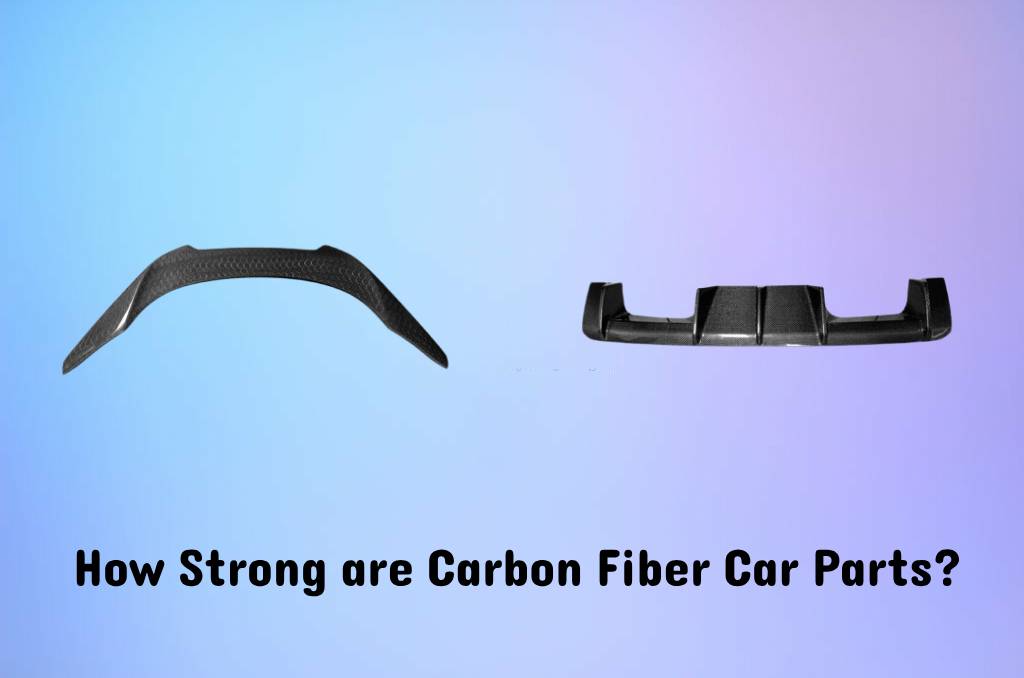When you consider car parts, the first priority comes to their strength and durability. Especially if you own a high-performance car, the priority is absolute. Here comes carbon fiber in the game, meeting every requirement for the job. The best thing about carbon fiber is it is rediculously lightweight but super strong.
Carbon fiber is so good that it is used in the Formula 1 races and special edition luxury cars. You may ask, how are they so strong? How do they fit in the high-demand car industry? Let’s explore the world of carbon fiber and find out.
What is Carbon Fiber?
Carbon fiber is a lightweight and highly durable material made from thin strands of carbon. In this setting, the carbon atoms are bonded together in a crystal structure. The strands are woven into sheets of carbon fiber or bundled into threads. It is combined later using resin to create a composite material.
Carbon fiber is so strong that it even surpassed steel in durability, with far less weight. There are two more important characteristics of carbon fiber: it is corrosion-proof and stiff. With such exceptional properties, carbon fiber became an ideal material in the automobile and aerospace industry.
Especially in high-performance or special edition cars, the use of carbon fiber is a common feature. For example, if you are looking for Toyota Supra aftermarket parts, carbon fiber is a widely popular material.
Types of Carbon Fiber Used in Cars
There are several variants of carbon fiber and some of the selected few are used in cars. Here is a list of the types of carbon fiber used in the automobile industry.
- High-Strength Carbon Fiber
- High-Modulus Carbon Fiber
- Intermediate-Modulus Carbon Fiber
- Hybrid Carbon Fiber Composites
- Recycled Carbon Fiber
Each type of carbon fiber is chosen based on its specific properties that match the demands of the car industry. High-performance and luxury cars often use high-strength or high-modulus carbon fibers. On the other hand, the mass market vehicles feature hybrid or recycled carbon fiber for cost efficiency.
Strength Comparison: Carbon Fiber vs. Other Materials
Here is a comparison table that will give you a clear idea of how strong carbon fiber is.
| Material | Strength (Relative to weight) | Weight | Other Properties | Application in Cars |
| Carbon Fiber | ~5x stronger than steel | ~75% lighter than steel | Gigh stiffness, corrosion resistant, brittle under impact | High-performance car parts (chassis, panels, spoilers) |
| Steel | Strong but heavier | Heavy | Tough, ductile, excellent impact resistance | Structural frames, safety cages |
| Aluminum | ~2-3x weaker than carbon fiber | ~50% heavier than carbon fiber | Lightweight, corrosion resistant, less stiff | Body panels, wheels, engine components |
| Fiberglass | Weaker than carbon fiber | Similar to carbon fiber | Flexible, cost-effective, lower stiffness | Non-critical parts, protective panels |
| Kevlar | High tensile strength, less stiff | Slightly heavier than carbon fiber | Excellent impact resistance, not as rigid | Armor, protective panels, hybrid parts |
It is clear from the table that carbon fiber is best for strength-to-weight ratio and stiffness. However, it will cost you significantly and is brittle.
Limitations of Carbon Fiber
Carbon fiber is strong and lightweight, but there are sone feats that even this material can not accomplish. Here are some of the significant limitations of carbon fiber in automobile usage:
High Cost
Manufacturing carbon fiber is a complex process, and materials are also highly expensive. So, carbon fiber will cost you significantly more than other regular materials. So, it is only used in high-tier cars, making it less accessible to the mass market.
Brittleness
Carbon fiber is super strong under high tension, but the brittleness is a problem. It can shatter or crack under sudden impact or extreme stress. So, if you need high impact resistance, carbon fiber is not the ideal option to choose.
Difficult Repairs
In case your carbon fiber car part is damaged, it is really hard and expensive to repair. Unlike other materials that can be welded and reshaped, carbon fiber parts need total replacements. Also, you can go through advanced and complex composite repair that is costly.
Manufacturing Complexity
The manufacturing process of carbon fiber parts is not scalable as it is really time-consuming and complex. The process of shaping carbon fiber into intricate designs is also labor-intensive. It needs specialized expertise and equipment. It contributes to the high price of carbon fiber parts.
Limited Ductility
Carbon fiber doesn’t bend or deform like other materials. So, it breaks down and fails miserably if pushed beyond its limits. It is a disadvantage in car crash scenarios, where other materials absorb energy more efficiently.
Conclusion
So, the bottom line is carbon fiber usage has both significant pros and cons in the car industry. But considering the groundbreaking weight-to-strength ratio, carbon fiber became a game changer. It is the secret ingredient of faster, more efficient, and better-handling cars. Yes, it is expensive, but you must pay more for exclusive materials, right? So, let’s cross our fingers and hope advanced tech will bring it into the range of the masses.

Hi, I’m Lauren Reynolds, owner of Talks Smartly.
We specialize in wishes, thank you messages, and thoughtful responses for all occasions.
Whether it’s a birthday wish or a heartfelt thank you, we’re here to make your messages shine.
Join us at Talks Smartly and let your words leave a lasting impression.”











